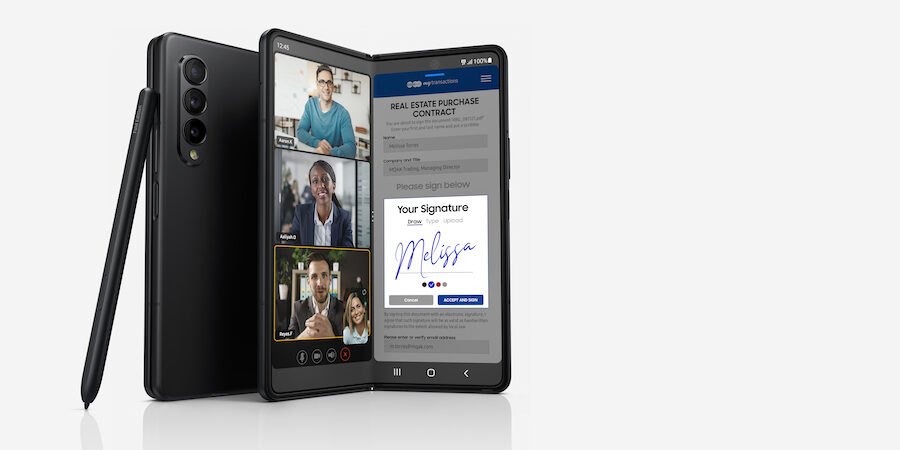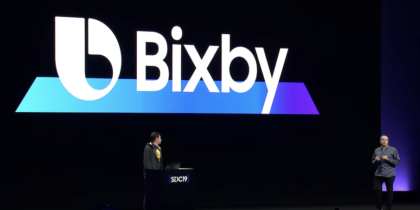Businesses have leaned more heavily on IT to keep operating amid the disruptions of the past two years — and according to analysts like Brian Jackson, their digital transformation is far from over.
As a research director at Info-Tech Research Group, Jackson meets regularly with CIOs and other business leaders to chart the best path forward in terms of aligning their technology investments with organizational needs. Despite the financial challenges and other obstacles many businesses have faced recently, he says companies are heading into 2022 ready to continue improving their ability to compete in the digital economy.
“Even in more traditional industries, where people had just been happy to rely on more manual processes for a long time, everybody is realizing the value of what connected technology can offer them,” say Jackson. “The IT department, in many cases and in many companies, has increased the number of people they’re serving. They’re involved in delivering more aspects of the customer experience, and they’re supporting more aspects of the business model.”
This means striking a delicate balance between immediate needs and new technologies that could prove critical later on. In Info-Tech’s 2022 Tech Trends report, for example, Jackson and his team identified “hybrid collaboration” as a trend where companies will seek out tools that provide a flexible, contextual experience to support employees wherever they’re working from.
Instead of using videoconferencing tools that glitch or make it difficult to hear everyone in the meeting, for instance, Jackson says he expects to see more investments in intelligent cameras that make virtual collaboriation feel more like everyone is sharing the same space. “Small things like that can make all the difference,” he says.
At the other end of the spectrum are a host of technologies that could change everything from the apps we use at work every day to business processes within retail, finance, manufacturing and the healthcare sector. These are some of the technologies making an impact:
1. Web3
What it is: At any given moment, employees might be using Google to conduct research, or logging into a social media platform to engage with customers as part of their marketing or customer service. These platforms have become more powerful as their user bases have grown. Web3 (sometimes called Web 3.0) proposes to offer an internet with less involvement of existing tech giants.
Web3 is an internet architecture built upon blockchain, operating in the same decentralized but secure way that provides a foundation for cryptocurrencies. Instead of having your search history turned into retargeting campaigns for advertisers, Web3 would allow every online user to manage their own identity and data, and to develop more collaborative social networks and digital services.
Where businesses will use it: In a recent report from venture capital firm Andreessen Horowitz, Web3 was described as a way to unleash a wide range of peer-to-peer financial services that could serve people who are underbanked, such as those who typically rely on money orders or check-cashing services. Web3 also supports the creation of non-fungible tokens (NFTs), which could affect the sales of everything from artworks to real estate.
According to Ray Wang, principal analyst at Constellation Research, Web3 could also prove to be a foundational part of developing deeply immersive augmented and virtual reality (VR) experiences that have been collectively dubbed the “metaverse.” For the most part, though, the potential is to share the value of information and data among more people, says Wang: “Web 3.0 is about putting the individual back into control.”
Timeline: While some elements of Web3 architecture are already here today or in development, research firm Messari — which specializes in this subject — predicts the transition from Web 2.0 to Web3 could take several decades.
2. Standalone 5G
What it is: Offering benefits like increased bandwidth and low latency, 5G has been at the forefront of mobile innovation in 2021. According to research from Omdia, 5G connections have grown 57 percent in 2021 in North America alone, with 10 commercial 5G networks launched globally. IDC predicts worldwide 5G connections will reach 1.1 billion by 2023. Next year, the story could get more interesting from a mobile network operator perspective, thanks to standalone 5G.
The initial rollouts of 5G networks haven’t been standalone; rather, they’ve paired a 5G Radio Access Network (RAN) with the LTE Evolved Packet Core (EPC), for example. This provides customers with higher data transfer speeds, among other advantages. But standalone 5G, on the other hand, pairs 5G radios with a 5G core network. It offers new ways to develop, deploy and manage a range of services, because it’s fully virtualized and allows operators to slice the network into logically separate services.
Where businesses will use it: Based on a report published in May by J.P. Morgan, standalone 5G could offer greater remote monitoring capabilities for healthcare providers and their patients, as well as connectivity for solar technology and wind farms in the energy sector.
Timeline: Standalone 5G has already launched in China, notes the J.P. Morgan report. Japan and South Korea are expected to follow soon, while the rest of the world may take longer.
3. Edge AI
What it is: The internet of things (IoT) has allowed businesses to connect equipment, vehicles, roadways and other everyday objects — so they can set up smart shelves in retail stores, or predict when machinery might fail. The problem is that sending data back and forth to cloud servers in a data center can introduce latency and affect performance. To eliminate this bottleneck, edge computing processes data closer to where it’s being created or used.
When you combine that with AI technologies like machine learning, companies can get faster access to data and insights, according to a report from ITBusinessEdge published in August 2021. Other benefits could include improved scaleability, performance and security.
Where businesses will use it: “We’ll see more edge AI as intelligence in the edge helps bring devices to life and smart services to market,” says Wang. The ITBusinessEdge report specifically points to automated optical inspection on manufacturing lines, better navigation for autonomous vehicles and facial recognition applications in finance and healthcare.
Timeline: According to a 2020 study by Oxford Economics and IBM, companies that deploy edge computing, including projects that make use of machine learning, can expect a positive return on investment over the next three years.
4. Decentralized digital identities
What they are: This might be an extension of the Web3 trend, but decentralized digital identities are worth calling out on their own — because they could disrupt the traditional approaches to login and authentication across a range of services.
The Groupe Speciale Mobile Association (GSMA) provides a helpful backgrounder on decentralized digital identity tools, showing how they offer users a way to verify their identity while they’re using mobile wallets or other apps that use blockchain. How does it work? Essentially, multiple organizations (such as a person’s employer, their federal government and so on) would act as identity “issuers” and validate the user via a distributed ledger.
Can foldables really save your business money?
See how much your company could save by replacing legacy tech with foldables. Download Now
Where businesses will use it: In a recent research paper from the Independent University of Monaco, civil engineer and researcher Florie Mazzorana suggests that decentralized digital identities could be used throughout the public sector for activities such as voting, or identity verification when traveling abroad. But Mazzarana’s paper also noted that such identify systems could “escape the control of national democracies” unless the right controls are in place.
Timeline: Jackson suggests that blockchain-related projects are a good example of the “intangible value creation” trend, which holds promise but may be further out. “You can’t have gone through 2021 without looking at the huge amount of value that’s going into blockchain from a private equity standpoint, and all the new potential solutions that are coming up in the startup world,” explains Jackson. “We may be early in the hype around it, but I think there is something there that will prove to become the back end of how we do many things.”
5. Wearable app integration
What it is: Data from eMarketer suggests more than 20 percent of Americans will be using a wearable in 2022. This means a larger addressable market for solutions that work across smartwatches and smartphones. Companies that haven’t factored this into their digital transformation plan should do so now, says Wang: “Indeed, we will see more wearable technologies become the interface between the digital and analog worlds.”
Where businesses will use them: Another of Deloitte’s predictions for 2022 is continued advancement of wearable devices that help consumers monitor their fitness and health. Meanwhile, market research firm IDC recently reported on how smartwatches could be used in business settings like warehouses to detect high-risk motions. And researchers at Stanford have explored how surgeons could use wearables to track their movements and ultimately improve their operating performance.
Timeline: eMarketer predicts the boom in wearables will reach nearly 23 percent of Americans by 2024.
“You have to think about how these trends impact upon your environment,” Jackson says. “What are your goals, and what what are the implications — how are your people going to be affected? Will you need to hire new people? Will you need to reassign them to different capacities? Will you have to procure these technologies? They’re all going to play out in many different ways.”
Get exclusive discounts, financing and other deals on Samsung technology when you power your business with Samsung Advantage. Not sure where to start with mobile? Take this quick free assessment to find the smartphone most tailored to your business needs.








